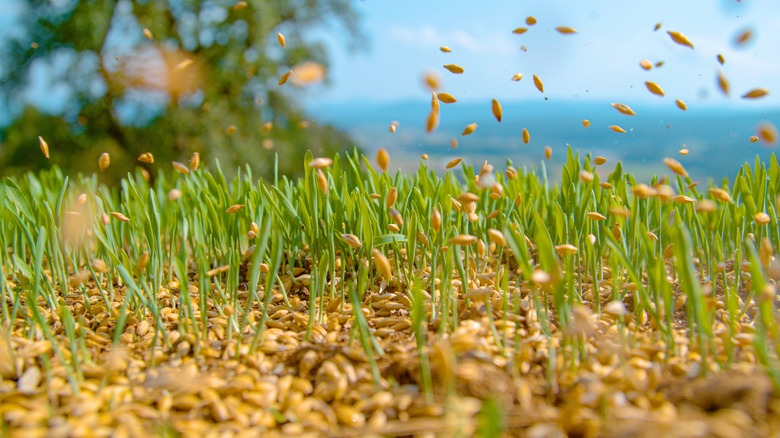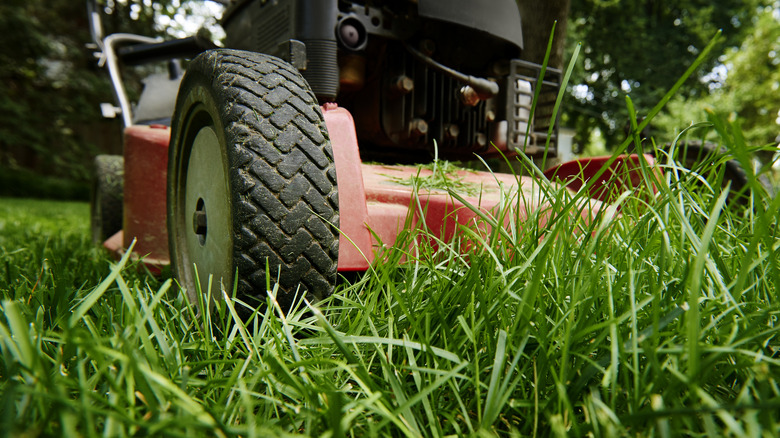Fescue grass is probably one of the most planted plants in the world. According to Oregon State University, it is one of the most popular species of cool season grass, and given how much Americans love their lawns, Fescue grass has become incredibly widespread over the past few decades. Tall fescue is more widely adaptable than many other species of lawn grass, with deeper roots that require less irrigation in warmer times.
However, the fact that fescue grass is a survivor doesn’t mean that you can simply throw down seeds at any time of year and expect a lawn to grow in a few weeks. The Rebels pointed out that cool-season grasses grow best during fall and spring, where the soil and air temperatures are in their sweet spot. Therefore it is in your interest to time your planting to take the best advantage of nature’s gifts and fescue grass’s own strengths.
Moreover, although spring is a time of year that fescue grasses do enjoy, for planting, fall is the ideal time. Firstly, the soil temperatures in fall are higher than in spring, as the earth still retains some of the summer’s heat. This is a gentler germination environment for your grass seed than wintry-cold spring soils. Secondly, in general, fall rains are gentler and more consistent than spring rains, which often clump together in downpours that can leave soils waterlogged. Specific dates will vary by region, but try to plant fescue grass around 45 days before the first frost.
How to plant fescue grass

A perfect lawn is a monoculture, which means removing all other weeds and grasses from the area before planting the fescue grass seeds. According to SuperSod, the best way to do this is to spray a non-selective weedkiller over the area two weeks before you plan to plant. This would be roughly two months before the first frost in your area, ideally.
Two weeks after spraying the lawn, remove the remaining/dead vegetation and grass from the area by tilling the entire space. This is also the optimal time to make any soil amendments that you need. At the bare minimum, you should be adding some kind of fertilizer to the soil to give your grass food to thrive, but also consider adjusting the soil pH or working in some sand to aid with drainage if necessary. Per Gardening Know How, aim for a pH from 6.5 to 5.5 and well-draining soil overall.
Finally, it’s time to sow your fescue grass! For the best, most even results, use a mechanical seeder, sowing half of your seed in east-west passes across the lawn, then the other half in north-south passes. For best germination, cover the seed either with ¼ inch of soil by raking the surface lightly or with a light layer of fertilizer. Water immediately and thoroughly, and keep the lawn consistently moist for two or three weeks when seedlings should appear.
Mowing and Watering Fescue Grass

Once the grass has reached a consistent height of 4.5 inches, mow it back to 3.5 inches. Barefoot Lawn Care advised against taking too much more off at first, as this can be damaging to a new lawn — another pitfall is blunt mower blades, which can tear rather than cut the grass and undo a lot of your hard work.
If at any time your rainfall amounts to less than an inch per week, increase watering to that level. Make sure that you don’t leave anything like sticks, rocks, or toys out on the lawn for extended periods of time, as their shadow will kill the grass and lead to bare spots.
When spring arrives, North Carolina State University advises mowing the grass to 2 and a half to 3 and a half inches, trying not to let it get higher than 5 and a half inches tall, so you’re not cutting too much of the plant each time. Leave the grass clippings on the lawn — this will provide a high proportion of the fertility that the grass needs. Spring is the best time for addressing weeds or blank spots with weedkillers and/or new seeds. Once summer hits, start mowing the fescue grass at a higher level. Pennington recommended 3 to 4 inches high and reiterated the best practice of not cutting more than one-third of the height of the lawn at any one time.



